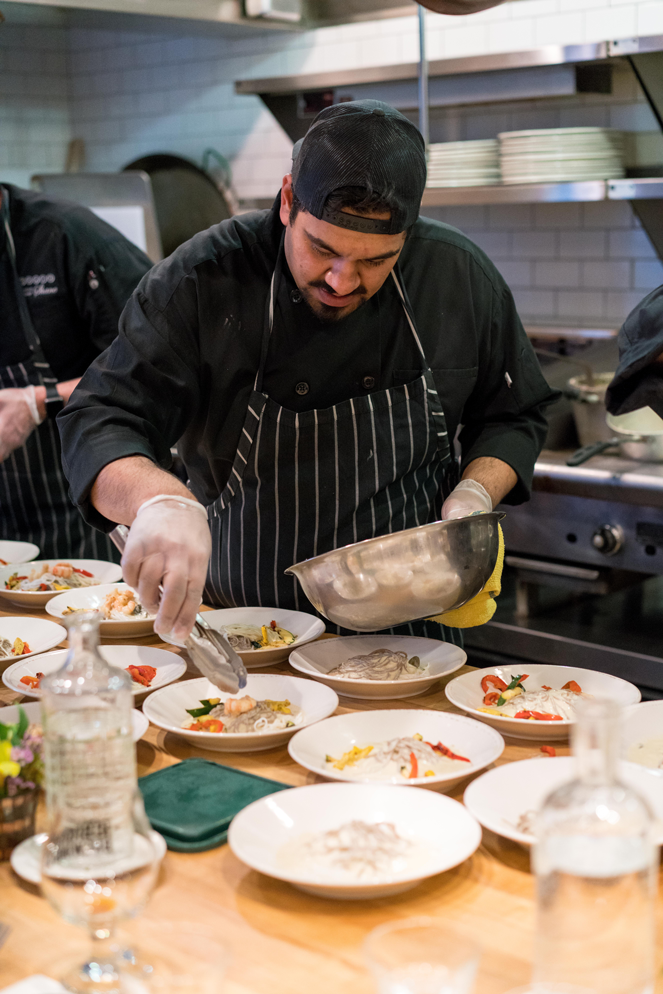Refine Your Restaurant Chart of Accounts with These Expert Insights
It should come as no surprise when we say that bookkeeping is important for any business. But in the restaurant industry, where invoices can get lost or damaged and vendor credits jotted in paper margins are the norm, balancing the books is a bit more complicated than a regular retail business—to say the least!
People like Brian Stubbs recognize that there’s a great need for accountants and bookkeepers to provide a targeted service to the hospitality industry that understands exactly the financial struggles that restaurants can experience.
With an accounting degree and 8 years of General Manager experience at the height of Austin’s restaurant boom, Stubbs started approaching young restaurants to offer a hand with their books in 2011. With that, Genuine Article Bookkeeping & Consulting was born.
Solomon Wang was working towards his MBA in 2019 when he started running into Stubbs in coffee shops across town. With a similar accounting background and love for the restaurant industry, Wang wound up shadowing at Genuine Article as he completed his degree. He’s now the Director of Operations at the company, and works directly with Genuine Article clients to implement xtraCHEF at their businesses.
Genuine Article has grown to become the go-to bookkeeping and consulting service for restaurants around Austin and other Texas metro areas. We recently sat down with Wang to gather his expert advice about the foundation for any restaurant’s accounting: the Chart of Accounts (CoA). Keep reading for his insight!
The importance of your Chart of Accounts
As we wrote in our ultimate guide to restaurant accounting, the CoA is the foundation for all financial record keeping at your restaurant. It’s a complete, coded list of all of the liabilities, assets, expenses, and income that go in and out of the business.
“Accounting is the language of business,” explains Wang. “The CoA is the means by which you can read your performance.”
A very basic, yet financially sound, CoA documents a system of credits and debits. But a more detailed CoA can help restaurants tell their story through data, stay audit-ready, and easily uncover inefficiencies that are costing the business money.

Cover and code your auxiliary expenses
Wang says that Genuine Article sees some clients who forget to implement a very important layer of expense data in their books: auxiliary expenses, like sales tax, wage tax, and discounts, that can account for large differences between projected and actual income.
Consider this: you make a $20 sale for a to-go order at your restaurant. Your CoA is set up to code all sales the same way. However, the code isn’t broken into the actual price of the sale and the tax that was added on. Your sale could actually be $18, with $2 in taxes a liability owed to the state.
Similarly, if discounts are lumped in with net sales, it won’t give you an accurate picture of what was actually purchased by customers and what your staff gave away, which makes tracking prime costs and sales patterns even more difficult.
Genuine Article recommends adding a layer of detail to the CoA that specifically codes these auxiliary expenses. Specifically labeling taxes and discounts can save business owners and bookkeepers from huge headaches when it comes to reconciling books and uncovering performance insights.
Create a core CoA, then layer detail to pinpoint problems
Wang shares that a lot of Genuine Article’s clients are either inherited from other bookkeepers and need support to expand, or they’re older restaurants who were successful back in the day but need an expert eye to turn the odds back in their favor.
“For the most part, [our clients previously] asked a consultant to create a CoA for them, and it wasn’t robust enough,” shares Wang. “We clean up a lot of chaos.”
Though a CoA that only addresses credits and debits is technically accurate, “Granularity is important for restaurants who are struggling,” says Wang. “Often, when sales categories are set up, restaurant food costs aren’t broken out.”
As we’re now seeing, it’s anyone’s guess when a restaurant can go from successful to struggling. To prepare for the unknown, restaurants should at least set specific codes for Food, Alcohol, and Beverage sales and liabilities. Too little detail in the CoA will prohibit operators from finding operational issues; too much detail, and the books become a burden to interpret.

Make a CoA that’s easy for anyone to understand
Wang notes that even the best CoAs mean nothing if all of the people involved in interpreting the books can’t follow the system that’s in place. “Data must be understood by everyone,” he says.
When Genuine Article works with a new client or finds a need to layer on more detail to an existing CoA, they ensure that they understand how the client interprets their own data or how they would like to interpret data in the future. This prevents any confusion among stakeholders and maintains consistency in how the numbers are interpreted.
After all, “If you can’t drive results on paper, it’s very difficult to succeed,” says Wang.
Your CoA doesn’t need to reinvent the wheel
Are you feeling overwhelmed by this advice, or feel like you’ve done your CoA all wrong? Take a deep breath. “We’ve never inherited a client then laid over a new CoA,” shares Wang.
Improvements and additions can be made to the CoA over time, which is especially important for new restaurant owners and operators who are still getting their sea legs when it comes to interpreting sales data and figuring out the numbers that are most important to them.
For new clients, Wang says that Genuine Article always uses the National Restaurant Association.


